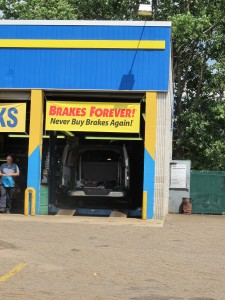 After any brake job is completed, a test drive should be performed. A test drive can ensure the brake system is operating properly. It can also help you to spot other problems with the vehicle. The other reason a test drive must be performed is to mate the pads to the rotors. This can be called “break in” or “burnishing” the pads. Burnishing also can help to transfer a layer of the friction material onto the rotor. Some manufacturers call this transfer-layer technology and it can help to increase the life of the rotor. The number of stops a technician should make will vary. Also, check the box or with the manufacturer for their recommended burnishing procedure.
After any brake job is completed, a test drive should be performed. A test drive can ensure the brake system is operating properly. It can also help you to spot other problems with the vehicle. The other reason a test drive must be performed is to mate the pads to the rotors. This can be called “break in” or “burnishing” the pads. Burnishing also can help to transfer a layer of the friction material onto the rotor. Some manufacturers call this transfer-layer technology and it can help to increase the life of the rotor. The number of stops a technician should make will vary. Also, check the box or with the manufacturer for their recommended burnishing procedure.
A good average is 10 to 12 stops. To mate the pads to the rotors make 10 to 12 stops from about 30 to 35 mph down to about 10 mph. Allow about 30 seconds between stops for cooling. This can also help to prevent the customer from experiencing a burning smell when they first apply the brakes for the first 100 miles. When you deliver the vehicle to the customer, advise them not to do any severe braking for the first couple of hundred miles. Some are also “pre-burnished” to eliminate many of the problems that can occur if the pads are not broken in properly.
Simply pumping up the pedal and backing the car out of the garage into a parking space could cause a comeback or a crash. This is a time to check your work and look for other items to repair.